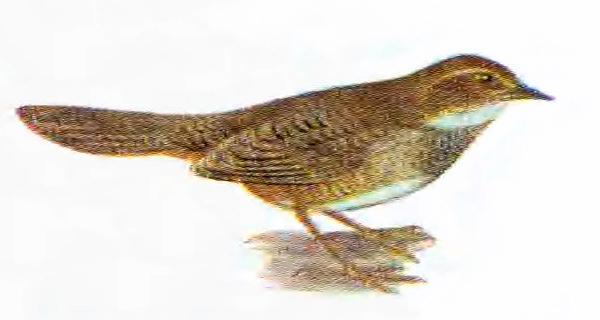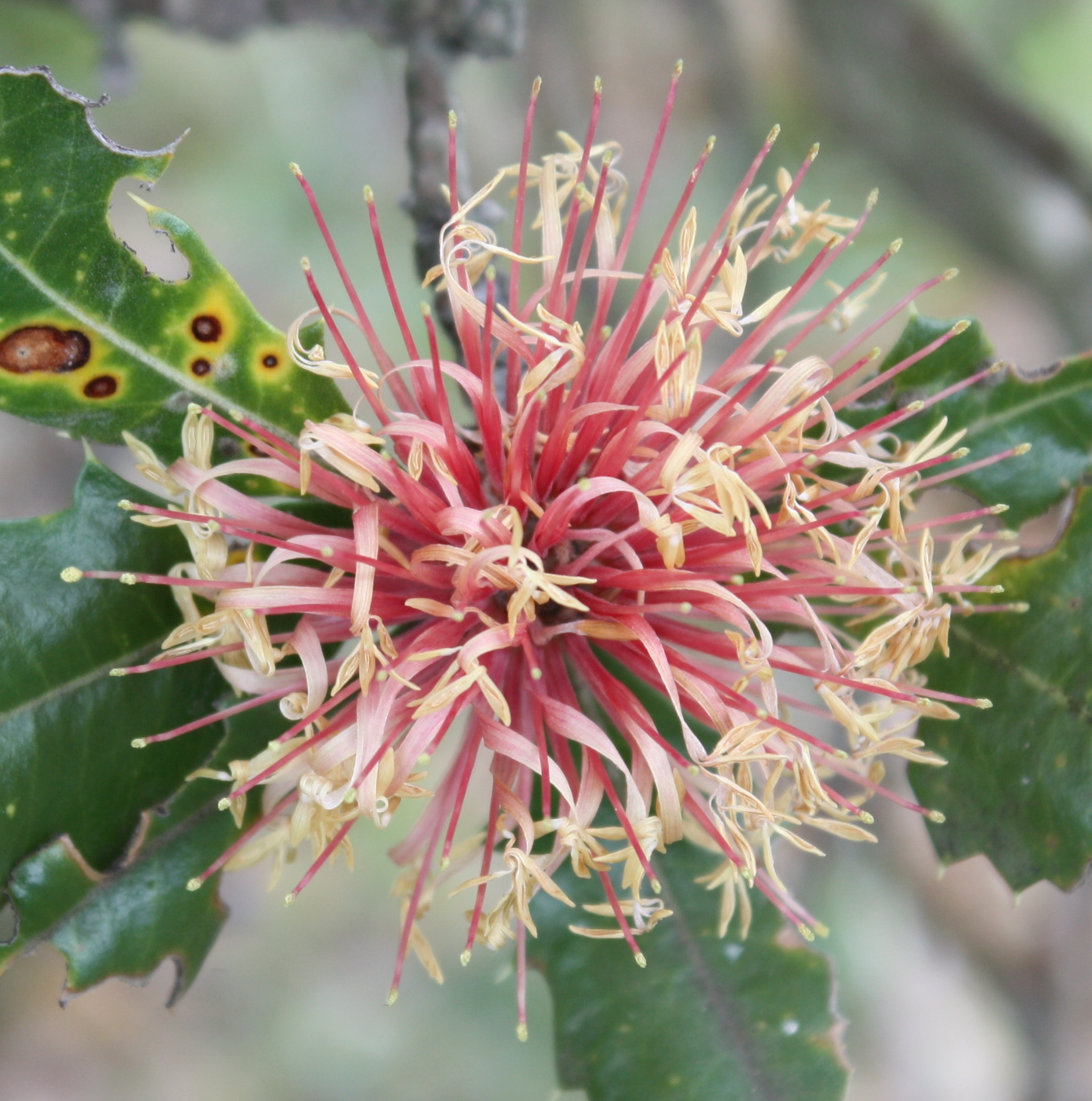|
Two Peoples Bay And Mount Manypeaks Important Bird Area
The Two Peoples Bay and Mount Manypeaks Important Bird Area is a 261 km2 tract of coastal and subcoastal land east of the city of Albany, Western Australia, Albany in south-west Western Australia. It is an important site for the conservation of several rare and threatened birds. Description The Important Bird Area (IBA) contains a 50 km length of coastal heathland habitat. It encompasses the Two Peoples Bay Nature Reserve, Two Peoples Bay, Mount Manypeaks, Arpenteur and Bald Island Nature Reserves, together with Waychinicup National Park and adjacent unprotected land with suitable habitat. It has a Temperateness, temperate climate supporting dense shrubland and heathland subject to occasional wildfires. It also contains a series of coastal wetlands, comprising Moates, Gardner and Angove Lakes, as well as Coffin Island which, with Bald Island, supports seabird colony, seabird colonies.BirdLife International. (2011). Important Bird Areas factsheet: Two Peoples Bay a ... [...More Info...] [...Related Items...] OR: [Wikipedia] [Google] [Baidu] |
BirdLife International
BirdLife International is a global partnership of non-governmental organizations that strives to conserve birds and their habitats. BirdLife International's priorities include preventing extinction of bird species, identifying and safeguarding important sites for birds, maintaining and restoring key bird habitats, and empowering conservationists worldwide. It has a membership of more than 2.5 million people across 116 country partner organizations, including the Royal Society for the Protection of Birds, the Wild Bird Society of Japan, the National Audubon Society and American Bird Conservancy. BirdLife International has identified 13,000 Important Bird and Biodiversity Areas and is the official International Union for Conservation of Nature’s Red List authority for birds. As of 2015, BirdLife International has established that 1,375 bird species (13% of the total) are threatened with extinction ( critically endangered, endangered or vulnerable). BirdLife International ... [...More Info...] [...Related Items...] OR: [Wikipedia] [Google] [Baidu] |
Western Thornbill
The western thornbill (''Acanthiza inornata'') is a species of bird in the family Acanthizidae. It is endemic to southwestern Australia. Its natural habitat In ecology, the term habitat summarises the array of resources, physical and biotic factors that are present in an area, such as to support the survival and reproduction of a particular species. A species habitat can be seen as the physical ... is Mediterranean-type shrubby vegetation. References western thornbill Endemic birds of Southwest Australia western thornbill Taxonomy articles created by Polbot {{Acanthizidae-stub ... [...More Info...] [...Related Items...] OR: [Wikipedia] [Google] [Baidu] |
Western Spinebill
The western spinebill (''Acanthorhynchus superciliosus'') is a honeyeater found in the heath and woodland of south-western Australia. Ranging between long, it weighs around . It has a black head, gray back and wings, with a red band behind its neck and from its throat to its breast. Its curved bill is long and slender. Like other honeyeaters, the western spinebill feeds on nectar. It tends to obtain its nectar from lower shrubs than most other honeyeaters, including ''Banksia'', '' Dryandra'', ''Grevillea'', '' Adenanthos'', and '' Verticordia''. It also feeds from trees of ''Banksia'' and ''Eucalyptus'', and from herbs such as '' Anigozanthos''. In addition to nectar, it feeds on insects that it captures in the air or on plants. It is a frequent visitor to '' Adenanthos obovatus'', and its territories are smaller when they contain more shrubs of this species. Male spinebills often contest their territory borders with other males, and allow females to live within them. These t ... [...More Info...] [...Related Items...] OR: [Wikipedia] [Google] [Baidu] |
Red-winged Fairywren
The red-winged fairywren (''Malurus elegans'') is a species of passerine bird in the Australasian wren family, Maluridae. It is non-migratory and endemic to the southwestern corner of Western Australia. Exhibiting a high degree of sexual dimorphism, the male adopts a brilliantly coloured breeding plumage, with an iridescent silvery-blue crown, ear coverts and upper back, red shoulders, contrasting with a black throat, grey-brown tail and wings and pale underparts. Non-breeding males, females and juveniles have predominantly grey-brown plumage, though males may bear isolated blue and black feathers. No separate subspecies are recognised. Similar in appearance and closely related to the variegated fairywren and the blue-breasted fairywren, it is regarded as a separate species as no intermediate forms have been recorded where their ranges overlap. Though the red-winged fairywren is locally common, there is evidence of a decline in numbers. Bearing a narrow pointed bill adapted for ... [...More Info...] [...Related Items...] OR: [Wikipedia] [Google] [Baidu] |
Rock Parrot
The rock parrot (''Neophema petrophila'') is a species of grass parrot native to Australia. Described by John Gould in 1841, it is a small parrot long and weighing with predominantly olive-brown upperparts and more yellowish underparts. Its head is olive with light blue forecheeks and lores, and a dark blue frontal band line across the crown with lighter blue above and below. The sexes are similar in appearance, although the female tends to have a duller frontal band and less blue on the face. Two subspecies are recognised. Rocky islands and coastal dune areas are the preferred habitats for this species, which is found from Lake Alexandrina in southeastern South Australia westwards across coastal South and Western Australia to Shark Bay. Unlike other grass parrots, it nests in burrows or rocky crevices mostly on offshore islands such as Rottnest Island. Seeds of grasses and succulent plants form the bulk of its diet. The species has suffered in the face of feral mammals; a ... [...More Info...] [...Related Items...] OR: [Wikipedia] [Google] [Baidu] |
Red-capped Parrot
The red-capped parrot (''Purpureicephalus spurius'') is a species of broad-tailed parrot native to southwestern Australia. It was described by Heinrich Kuhl in 1820, with no subspecies recognised. It has long been classified in its own genus owing to its distinctive elongated beak, though genetic analysis shows that it lies within the lineage of the '' Psephotellus'' parrots and that its closest relative is the mulga parrot (''Psephotellus varius''). Not easily confused with other parrot species, it has a bright crimson crown, green-yellow cheeks, and a distinctive long bill. The wings, back, and long tail are dark green, and the underparts are purple-blue. The adult female is very similar though sometimes slightly duller than the male; her key distinguishing feature is a white stripe on the wing under-surface. Juveniles are predominantly green. Found in woodland and open savanna country, the red-capped parrot is predominantly herbivorous, consuming seeds, particularly of euca ... [...More Info...] [...Related Items...] OR: [Wikipedia] [Google] [Baidu] |
Western Rosella
The western rosella (''Platycercus icterotis''), or moyadong, is a species of parrot endemic to southwestern Australia. The head and underparts are bright red, and the back is mottled black; a yellow patch at the cheek distinguishes it from others of the genus '' Platycercus''. Adults of the species exhibit sexual dimorphism with the females duller overall; juveniles lack the striking colours of mature birds and the characteristic patterning is not as easily distinguished. Their communication call is a softly delivered ''pink-pink'' sound, and much of their behaviour is comparatively unobtrusive. Their habitat is in eucalypt forests and woodlands, where they often remain unobserved until they appear to feed on seeds at nearby cleared areas. Individuals form mating pairs and generally remain in one locality, although they will venture out to join small groups at plentiful sources of food. The western rosella is predominantly herbivorous, its diet consisting mostly of seeds of gra ... [...More Info...] [...Related Items...] OR: [Wikipedia] [Google] [Baidu] |
Australasian Bittern
The Australasian bittern (''Botaurus poiciloptilus''), also known as the brown bittern or matuku hūrepo, and also nicknamed the "bunyip bird", is a large bird in the heron family Ardeidae. A secretive bird with a distinctive booming call, it is more often heard than seen. Australasian bitterns are endangered in both Australia and New Zealand. Taxonomy German zoologist Johann Georg Wagler described the Australasian bittern in 1827. It is one of four similarly-plumaged species in the genus ''Botaurus''. Description The length is from 650 to 750 mm with adults being similar between the sexes while the male is significantly larger. The bird has a deep brown upper surface, mauled with buff on wing coverts; face and eyebrow buff, with dark brown stripe running from bill to erectile plumes at sides of neck. Under surface buff, striped with brown. The face skin is a dull green as are the legs and feet, it possesses a dark brown bill, yellow eyes, and the base of the lower mandible is gr ... [...More Info...] [...Related Items...] OR: [Wikipedia] [Google] [Baidu] |
Carnaby's Black Cockatoo
Carnaby's black cockatoo (''Zanda latirostris''), also known as the short-billed black cockatoo, is a large black cockatoo endemic to southwest Australia. It was described in 1948 by naturalist Ivan Carnaby. Measuring in length, it has a short crest on the top of its head. Its plumage is mostly greyish black, and it has prominent white cheek patches and a white tail band. The body feathers are edged with white giving a scalloped appearance. Adult males have a dark grey beak and pink eye-rings. Adult females have a bone-coloured beak, grey eye-rings and ear patches that are paler than those of the males. This cockatoo usually lays a clutch of one to two eggs. It generally takes 28 to 29 days for the female to incubate the eggs, and the young fledge ten to eleven weeks after hatching. The young will stay with the family until the next breeding season, and sometimes even longer. The family leaves the nesting site after the young fledge until the following year. Carnaby's ... [...More Info...] [...Related Items...] OR: [Wikipedia] [Google] [Baidu] |
Great-winged Petrel
The great-winged petrel (''Pterodroma macroptera'') is a petrel. Taxonomy This species was formerly treated as containing two subspecies - ''P. m. macroptera'' and ''P. m. gouldi'', the latter of which is endemic to New Zealand. As of 2014, the latter is recognized as a species in its own right, the grey-faced petrel (''Pterodroma gouldi''). In 2016 further research was published supporting the full species status of the grey-faced petrel. Description This is a large seabird, with a body length of 42–45 cm. The bird is completely dark brown except for a variable patch of white near the base of the bill, which is black. It is separated from sooty shearwater and short-tailed shearwater by the all-dark underwing, the thick, stubby bill, and different jizz. The similar flesh-footed shearwater has a light, pinkish bill. Petrels in the genus ''Procellaria'' are larger and have a less bounding flight. Distribution The great-winged petrel breeds in the Southern Hemisphere ... [...More Info...] [...Related Items...] OR: [Wikipedia] [Google] [Baidu] |
Flesh-footed Shearwater
The flesh-footed shearwater (''Ardenna carneipes''; formerly ''Puffinus carneipes'') is a medium-sized shearwater. Its plumage is black. It has pale pinkish feet, and a pale bill with a distinct black tip. Together with the equally light-billed pink-footed shearwater, it forms the ''Hemipuffinus'' group, a superspecies which may or may not have an Atlantic relative in the great shearwater. These large shearwaters are among those that have been separated into the genus ''Ardenna''. Recent genetic analysis indicates evidence of strong divergence between Pacific colonies relative to those in South and Western Australia, thought to be explained by philopatry and differences in foraging strategies during the breeding season. A molecular phylogenetic study published in 2021 found very little genetic difference between the flesh-footed shearwater and the pink-footed shearwater (''Ardenna creatopus''). The authors of the study suggested that these two taxa might be better considered a ... [...More Info...] [...Related Items...] OR: [Wikipedia] [Google] [Baidu] |







_(cropped).jpg)


